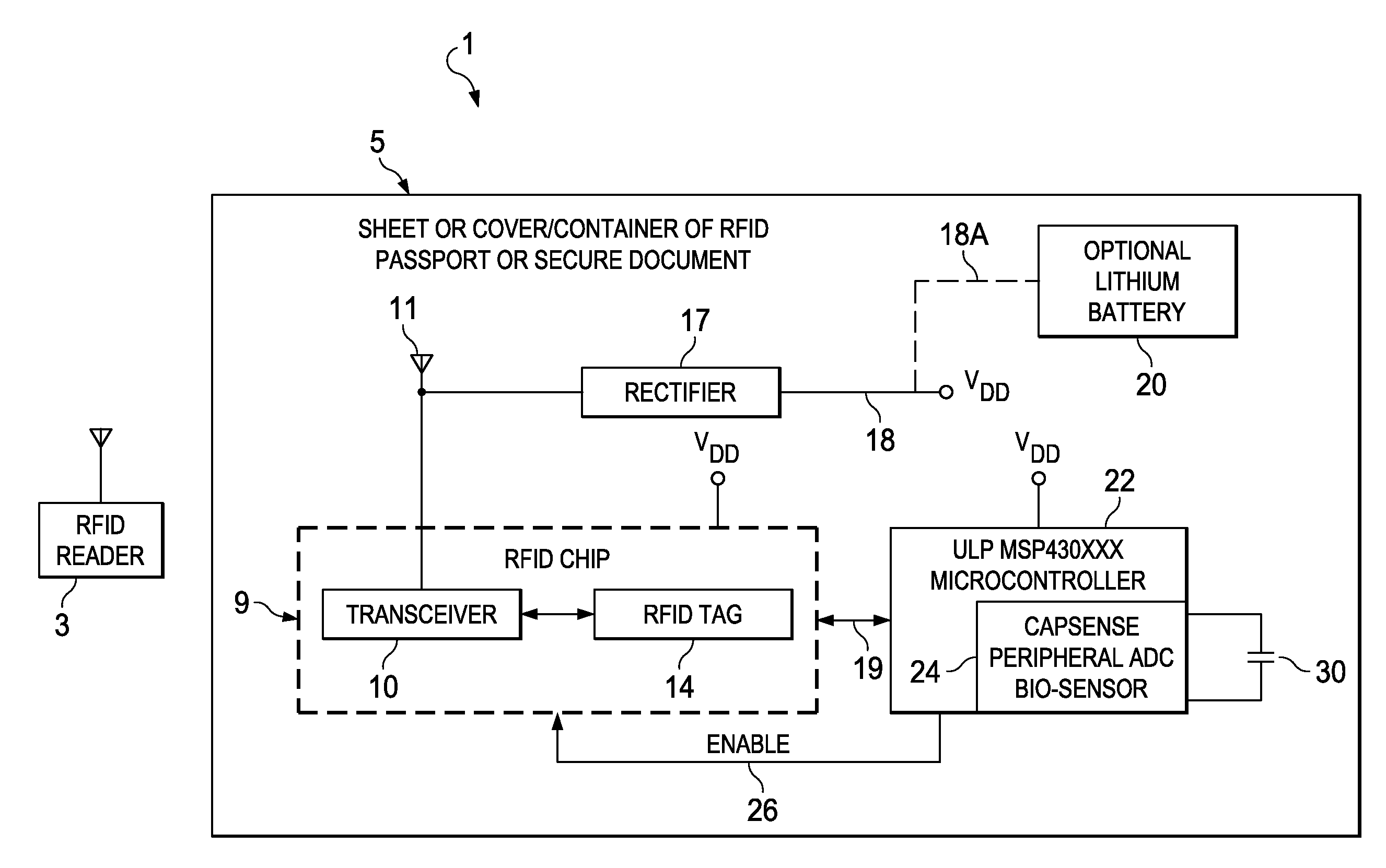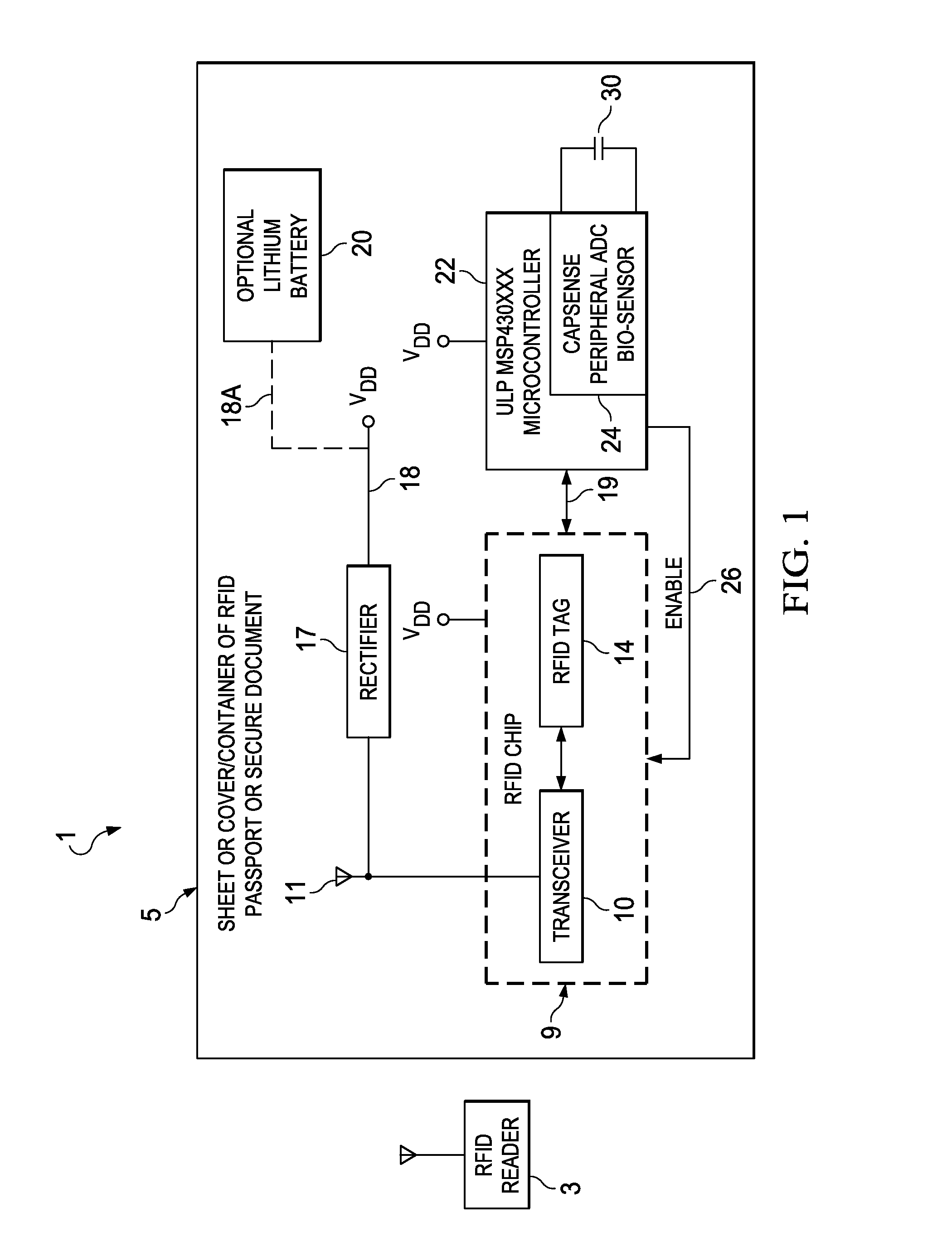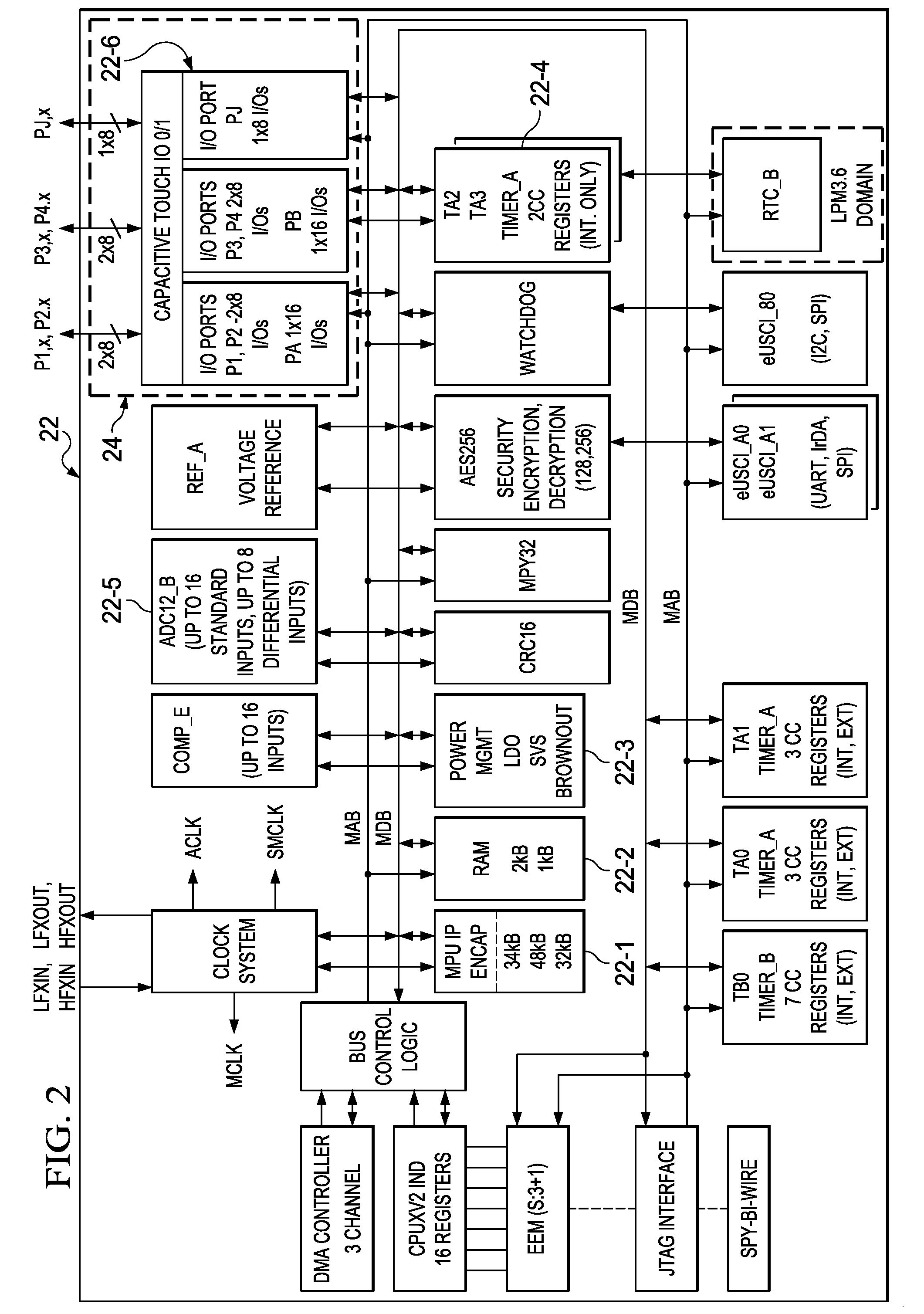Circuit and method for using capacitive touch to further secure information in RFID documents
a capacitive touch and document technology, applied in the field of circuitry, can solve the problems of unsatisfactory approach, unauthorized access to rfid-based documents, and stored information is vulnerable to unauthorized “skimming” or eavesdropping of rfid tags, and achieve the effect of preventing unauthorized access to a passport, convenient and inexpensiv
- Summary
- Abstract
- Description
- Claims
- Application Information
AI Technical Summary
Benefits of technology
Problems solved by technology
Method used
Image
Examples
Embodiment Construction
[0034]Various embodiments of the invention protect information in a RFID-accessible document, e.g., a passport, by preventing it from being accessed or read by an RFID reader unless the document has first been touched, opened, or otherwise handled by the person in possession of the document in some way that “enables” it or “resets” it to allow information in the document to be accessed. The present invention thus prevents unauthorized access to the document, even if the RFID reader transmits sufficient power, by requiring the RFID circuitry embedded in the document to be “enabled” by the person in possession of the RFID document before it can be “powered up” in response to the signal transmitted by the RFID reader. For example, the RFID circuitry may be enabled if the person in possession of the passport or document touches a sense capacitor that is embedded in the document or physically opens the document or actuates a switch in or associated with the document. For example, there a...
PUM
 Login to View More
Login to View More Abstract
Description
Claims
Application Information
 Login to View More
Login to View More - R&D
- Intellectual Property
- Life Sciences
- Materials
- Tech Scout
- Unparalleled Data Quality
- Higher Quality Content
- 60% Fewer Hallucinations
Browse by: Latest US Patents, China's latest patents, Technical Efficacy Thesaurus, Application Domain, Technology Topic, Popular Technical Reports.
© 2025 PatSnap. All rights reserved.Legal|Privacy policy|Modern Slavery Act Transparency Statement|Sitemap|About US| Contact US: help@patsnap.com



